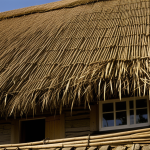Expert strategies for blending advanced audio with period interiors
Successfully integrating modern sound into classic UK home design requires balancing technology with heritage. Key principles prioritize respect for original aesthetics while enhancing audio performance. Advanced audio technology should complement, not overpower, period interiors.
Period and listed buildings present unique challenges. Preservation rules often limit structural changes, demanding innovative solutions. For example, routing cables discreetly or choosing wireless options can avoid damage. Advanced audio technology now includes compact, high-quality systems designed to fit unobtrusively within existing architecture.
Topic to read : Exquisite antique clocks for sale: find your perfect timepiece
Maintaining the charm of original interiors means avoiding visual disruption. This can be achieved by selecting equipment that blends seamlessly with mouldings, woodwork, and plaster details. Using finishes that match period décor helps components fade into the background. Specialists often integrate speakers behind bespoke cabinetry or custom joinery, preserving character without compromising sound quality.
Understanding how to harmonise classic design with cutting-edge audio elevates both function and form. By combining thoughtful installation strategies with careful product choices, homeowners can enjoy advanced audio technology while honouring the unique beauty of historic UK homes.
Also read : Revolutionizing classic uk window décor: cutting-edge curtain trends redefine tradition
Selecting discreet audio solutions for historic homes
When integrating modern sound into classic homes UK owners treasure visual authenticity. Choosing discreet audio systems is essential to preserve period charm while delivering high-fidelity sound. Wireless speakers stand out as an excellent option. They require minimal cabling, reducing intrusive wiring that can damage historic structures. This aligns well with historic home renovations focused on protection and subtlety.
In-wall and ceiling speakers offer another elegant route. Installed flush with surfaces, they blend seamlessly with traditional plasterwork and wood mouldings. Selecting speaker grilles that match wall texture or custom painting them to mirror surrounding finishes enhances invisibility.
Invisible sound technology takes subtlety further—transducer panels can be hidden behind décor elements or artwork, producing impressive sound without visible drivers. Balancing performance with aesthetics, these solutions respect classic UK home design without compromise.
Key tips for installation include:
- Positioning speakers where architectural lines naturally interrupt surfaces
- Employing wireless or low-profile wiring methods to maintain period integrity
- Working with manufacturers specialising in historic home-friendly models
Ultimately, discreet audio solutions allow homeowners to enjoy advanced audio technology without detracting from their home’s unique heritage and style.
Expert strategies for blending advanced audio with period interiors
Balancing advanced audio technology with classic UK home design demands careful planning. The core principle is integrating modern sound without disrupting the period aesthetics intrinsic to historic homes. This is especially crucial in historic home renovations where original character must be preserved.
One key strategy involves selecting equipment that complements traditional finishes, such as speakers with customizable grills matching woodwork or plaster. Integrating systems behind existing architectural elements reduces visual impact, maintaining interior harmony.
Navigating challenges posed by listed building restrictions limits invasive installation methods. Creative solutions include wireless speakers to avoid extensive cabling and routing necessary wiring through less sensitive areas like under floors or inside cavity walls.
Designers also recommend detailed site surveys to identify discreet locations enhancing acoustic performance without sacrificing style. Combining these with tailored audio calibrations ensures sound quality matches expectations for both music and dialogue clarity.
Respecting original craftsmanship while introducing cutting-edge audio elevates living experiences in period homes. Homeowners benefit from immersive soundscapes, all while preserving the charm and integrity that make these spaces unique.
Expert strategies for blending advanced audio with period interiors
Blending advanced audio technology into classic UK home design requires a careful balance. The primary goal is integrating modern sound systems while respecting the historic home renovations constraints that protect original interiors. This means choosing equipment designed to be subtle yet high performing.
Key principles emphasise preserving the home’s character by selecting components that visually harmonise with traditional finishes, such as speakers with customizable grills matching wood or plaster. Installing speakers behind existing architectural elements reduces visual impact and retains the room’s classic appeal.
Navigating challenges unique to period and listed buildings is critical. Restrictions often prohibit invasive modifications, so solutions like wireless speakers or minimal wiring routed through less sensitive areas help avoid damage. Detailed acoustic surveys inform optimal speaker placement, maximising sound quality without detracting from the décor.
Maintaining the integrity and charm of original interiors while implementing advanced audio technology ensures the home’s atmosphere remains undisturbed. Homeowners benefit from immersive soundscapes that enhance daily living, all within a setting that honours its heritage and architectural beauty.
Expert strategies for blending advanced audio with period interiors
Integrating modern sound into classic UK home design demands a thoughtful approach that honours historic home renovations while embracing advanced audio technology. The key lies in selecting audio components that both deliver exceptional performance and respect traditional aesthetics.
One vital principle is choosing speakers with customizable grills or finishes that match existing woodwork, plaster, or mouldings. This seamless visual integration maintains the home’s original charm. Additionally, positioning speakers behind architectural elements like cabinetry or within wall cavities preserves the integrity of period interiors.
Navigating the limitations common to listed buildings requires innovative solutions. Wireless speakers reduce the need for invasive cabling, avoiding structural damage and complying with conservation area regulations. Where wiring is necessary, routing cables discreetly through less sensitive spaces such as underfloor voids or behind skirting boards minimises impact.
Detailed acoustic surveys precede installation to identify optimal speaker placement that balances sound quality with minimal visual disruption. This ensures immersive soundscapes enhance, rather than detract from, historic interiors. Ultimately, blending advanced audio technology with classic UK home design strikes the right balance—respecting heritage while enriching the homeowner’s listening experience.










